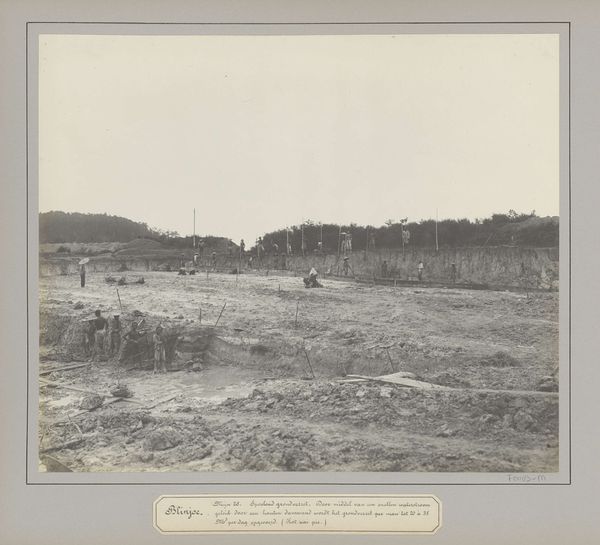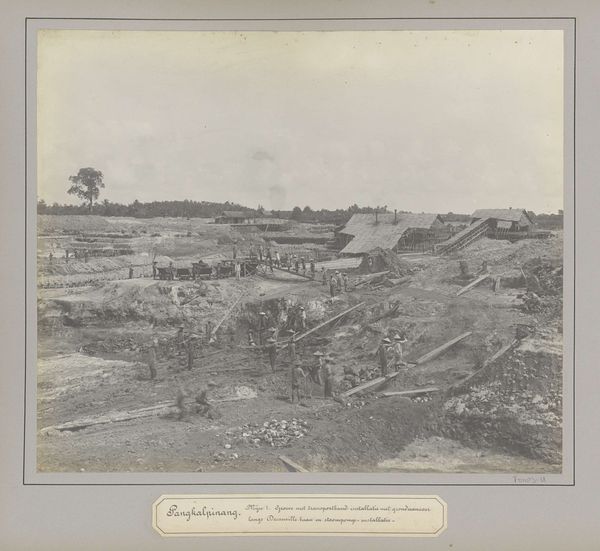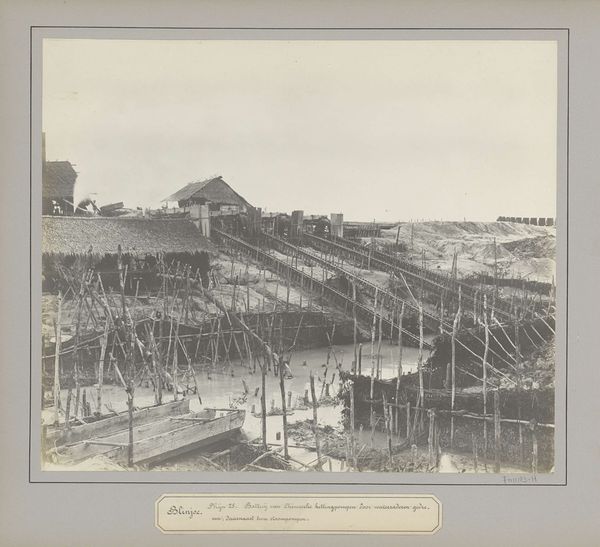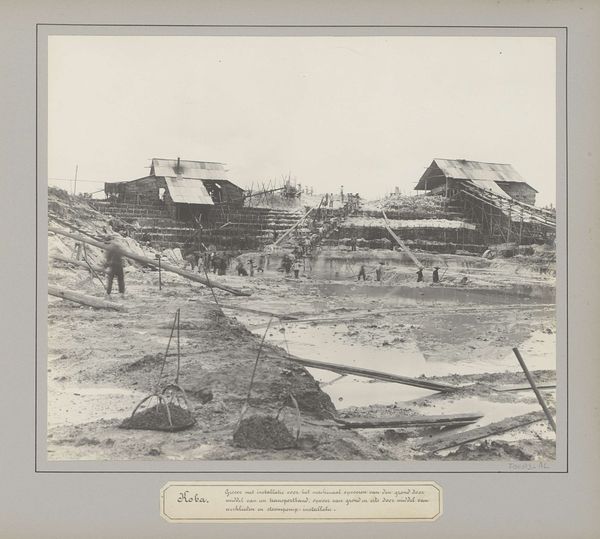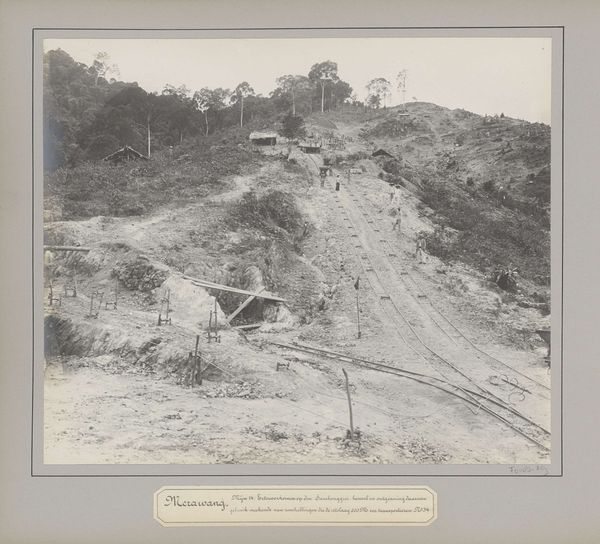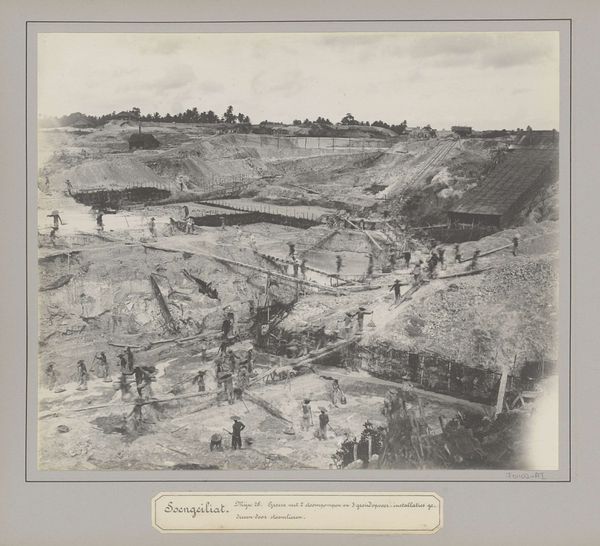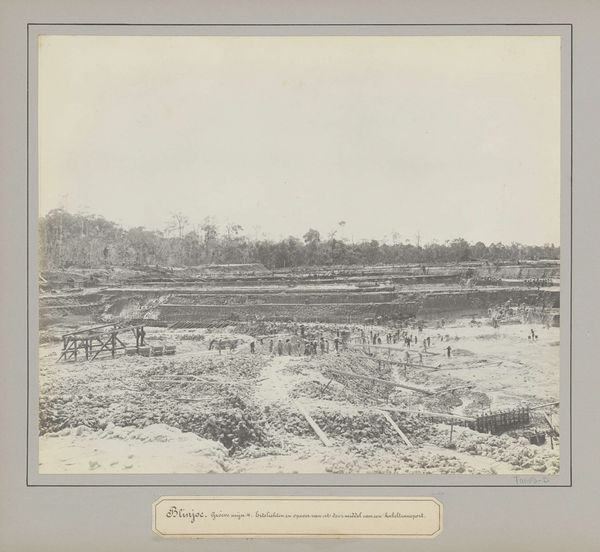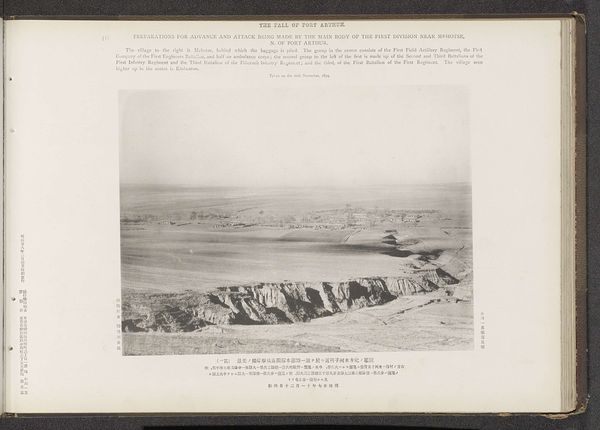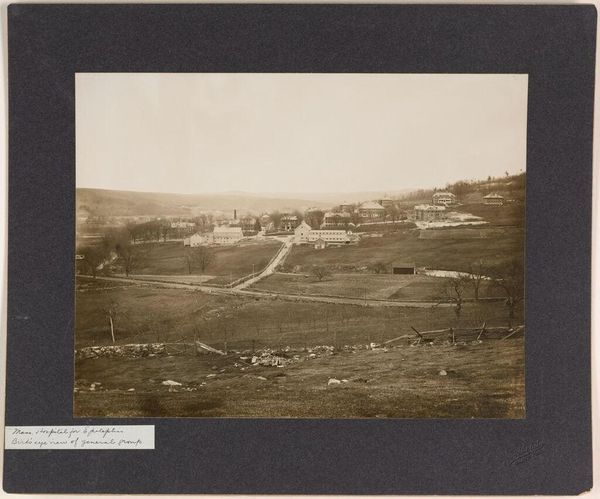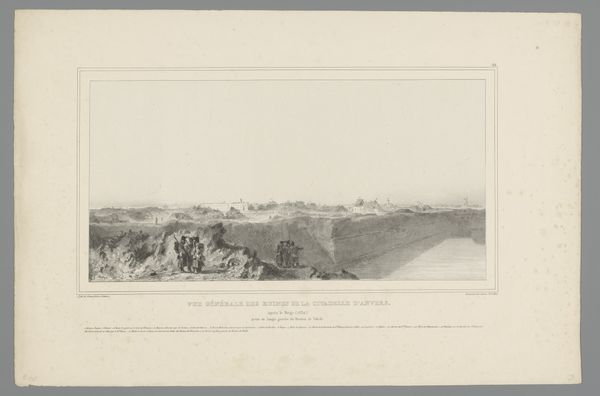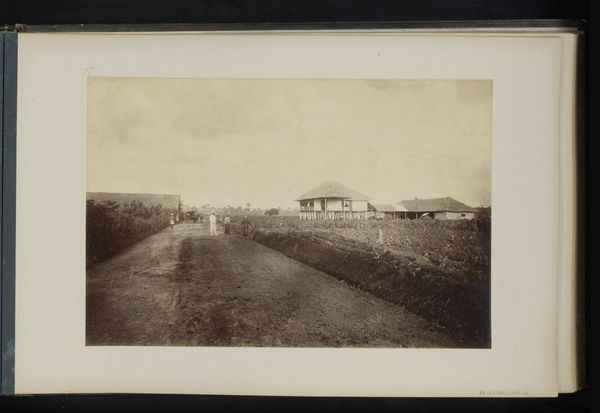
photography, albumen-print
#
landscape
#
archive photography
#
photography
#
albumen-print
#
realism
Dimensions: height 240 mm, width 285 mm
Copyright: Rijks Museum: Open Domain
Editor: This photograph, "Tingroeve met werknemers te Pangkalpinang," was taken around 1900 to 1920. It’s an albumen print showing a mining operation. I'm struck by how exposed and vast the landscape is, and how small the figures seem against it. What jumps out at you when you look at this image? Curator: What immediately grabs me is the labor embedded in this landscape. The albumen print itself – a material product of photographic processes prevalent at the time – speaks to the means of image production. But the image documents extractive labor, look at the scale of the operation. Consider what is consumed, and where it is sent, but let's also remember what the workers experienced and endured as they transformed their physical world into a commodity. The print invites an analysis that exceeds surface appearances to engage critically with resource distribution. What do you think it might tell us about early global trade routes? Editor: I hadn't really considered the connection to global trade routes directly, but I see what you mean. The mined materials would obviously have been exported. Were albumen prints also widely circulated at this time? Curator: Precisely. Both the products extracted through mining and the photographic prints capturing these scenes had significant circulation. The circulation underscores networks of resource extraction and visual representation. Who were these pictures for, and how might they shape ideas back in Europe or elsewhere? Do you see this photography more as objective documentation or something else entirely? Editor: That's fascinating. I guess I had a naive view of photographs as simply records of events, but it's clear that they can be active participants in broader economic and political systems. It certainly makes you reconsider who has agency and how their labor manifests in the creation of raw materials. Curator: Exactly. By thinking through materials, labor and distribution we move towards an informed understanding of how this image participates in and reflects broader economic networks.
Comments
No comments
Be the first to comment and join the conversation on the ultimate creative platform.
